Related Research Articles

The Lewis and Clark Expedition, also known as the Corps of Discovery Expedition, was the United States expedition to cross the newly acquired western portion of the country after the Louisiana Purchase. The Corps of Discovery was a select group of U.S. Army and civilian volunteers under the command of Captain Meriwether Lewis and his close friend Second Lieutenant William Clark. Clark and 30 members set out from Camp Dubois, Illinois, on May 14, 1804, met Lewis and ten other members of the group in St. Charles, Missouri, then went up the Missouri River. The expedition crossed the Continental Divide of the Americas near the Lemhi Pass, eventually coming to the Columbia River, and the Pacific Ocean in 1805. The return voyage began on March 23, 1806, at Fort Clatsop, Oregon, and ended on September 23 of the same year.

Meriwether Lewis was an American explorer, soldier, politician, and public administrator, best known for his role as the leader of the Lewis and Clark Expedition, also known as the Corps of Discovery, with William Clark. Their mission was to explore the territory of the Louisiana Purchase, establish trade with, and sovereignty over the natives near the Missouri River, and claim the Pacific Northwest and Oregon Country for the United States before European nations. They also collected scientific data, and information on indigenous nations. President Thomas Jefferson appointed him Governor of Upper Louisiana in 1806. He died of gunshot wounds in what was either a murder or suicide, in 1809.

Toussaint Charbonneau was a Canadian-born explorer, fur trapper and merchant who is best known for his role in the Lewis and Clark Expedition as the husband of Sacagawea.

The Corps of Discovery was a specially established unit of the United States Army which formed the nucleus of the Lewis and Clark Expedition that took place between May 1804 and September 1806. The Corps was led jointly by Captain Meriwether Lewis and Second Lieutenant William Clark. Commissioned by President Thomas Jefferson, the Corps' objectives were scientific and commercial – to study the area's plants, animal life, and geography, and to learn how the Louisiana Purchase could be exploited economically. Aside from its military composition, the Corps' additional personnel included scouts, boatmen, and civilians.
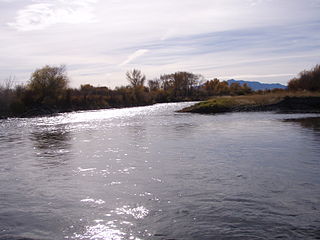
The Jefferson River is a tributary of the Missouri River, approximately 83 miles (134 km) long, in the U.S. state of Montana. The Jefferson River and the Madison River form the official beginning of the Missouri at Missouri Headwaters State Park near Three Forks. It is joined 0.6 miles (1.0 km) downstream (northeast) by the Gallatin.

Fort Clatsop was the encampment of the Lewis and Clark Expedition in the Oregon Country near the mouth of the Columbia River during the winter of 1805–1806. Located along the Lewis and Clark River at the north end of the Clatsop Plains approximately 5 miles (8.0 km) southwest of Astoria, the fort was the last encampment of the Corps of Discovery, before embarking on their return trip east to St. Louis.

This is the timeline of the Lewis and Clark Expedition through the American West, 1803–1806.
Alexander Hamilton Willard (1777–1865) was a blacksmith who joined the Lewis and Clark Expedition.

The Floyd River is a tributary of the Missouri River, 112 miles (180 km) long, in northwestern Iowa in the United States. It enters the Missouri at Sioux City, and is named for Charles Floyd, a member of the Lewis and Clark Expedition.

Patrick Gass served as sergeant in the Lewis and Clark Expedition (1804–1806). He was important to the expedition because of his service as a carpenter, and he published the first journal of the expedition in 1807, seven years before the first publication based on Lewis and Clark's journals.

The Great Falls of the Missouri River are a series of waterfalls on the upper Missouri River in north-central Montana in the United States. From upstream to downstream, the five falls along a 10-mile (16 km) segment of the river are:
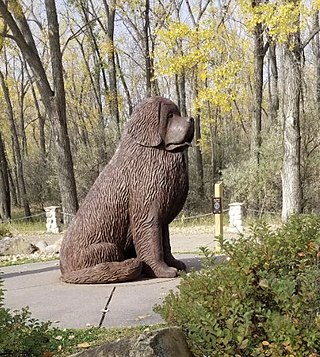
Seaman, a Newfoundland dog, was a member of the Lewis and Clark Expedition, the first trip from the Mississippi River to the Pacific coast and back. He was the only animal to complete the entire three-year trip.
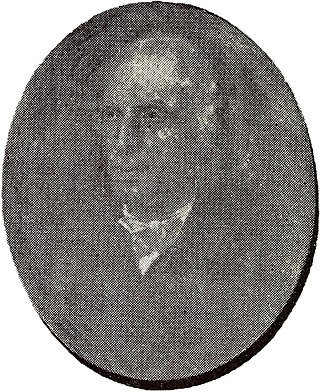
Robert Patterson was an American educator and director of the United States Mint. He was born on a lease-held farm near Hillsborough, County Down, Ireland, emigrated to the North American British colonies in 1768, and lived for a time in Philadelphia.
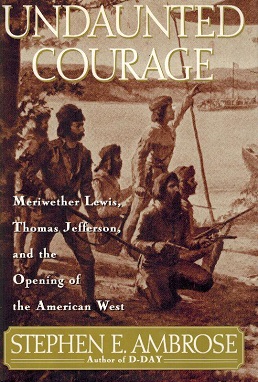
Undaunted Courage: Meriwether Lewis, Thomas Jefferson, and the Opening of the American West (ISBN 0684811073), written by Stephen Ambrose, is a 1996 biography of Meriwether Lewis of the Lewis and Clark Expedition. The book is based on journals and letters written by Lewis, William Clark, Thomas Jefferson and the members of the Corps of Discovery. While most of the book is dedicated to the expedition, several chapters are also devoted to Lewis's early life as a Virginia planter and Jefferson's personal secretary, and his later life as governor of the Louisiana Territory before his untimely death in 1809.

Sacagawea was a Lemhi Shoshone woman who, in her teens, helped the Lewis and Clark Expedition in achieving their chartered mission objectives by exploring the Louisiana Territory. Sacagawea traveled with the expedition thousands of miles from North Dakota to the Pacific Ocean, helping to establish cultural contacts with Native American people and contributing to the expedition's knowledge of natural history in different regions.

The Far Horizons is a 1955 American Western film directed by Rudolph Maté, starring Fred MacMurray, Charlton Heston, Donna Reed and Barbara Hale. It is about the early 19th century Lewis and Clark Expedition, which was sent by President Thomas Jefferson to survey the territory that the United States has just acquired in the Louisiana Purchase from France. They are able to overcome the dangers they encounter along the way with the help of a Shoshone woman named Sacagawea. This is currently the only major American motion picture on the Lewis and Clark Expedition. Many details are fictional, and the minor scene where the group reaches the Pacific Ocean reflects the low budget of the film. The film was re-released in 1962 by Citation Films Inc. as Untamed West in a double feature with Jungle Attack.

The Lemhi Reservation was a United States Indian Reservation for the Lemhi Shoshone from 1875 to 1907. During almost all this time their main chief was Tendoy.
Yorks Islands, also known as "Yorks 8 Islands" or "York's Islands" or simply "York Island(s)" are a group of several islands in the flood plain of the Missouri River, in Broadwater County, Montana, about 4 miles south (up-river) from Townsend, Montana, along U.S. Highway 287. The islands were named by the Lewis and Clark Expedition (1803–1806) for Clark's slave York, when the expedition passed this way in 1805 on their historic journey of exploration to the Pacific Ocean. The islands may be accessed from U.S.287, as a Montana Fishing Access site.
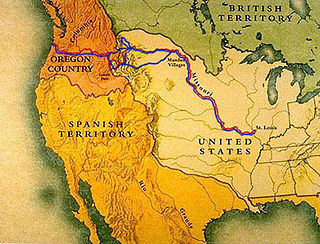
This is a bibliography of literature dealing with the Lewis and Clark Expedition.

Donald Dean Jackson was an American journalist, historian, and professor of American history involving early America and the Civil War mostly. He was the founding editor of the University of Virginia's George Washington Papers project. Apart from his editing and publishing of those papers, Jackson was also noted for his consulting and editorship in the Lewis and Clark project, gathering and compiling related manuscripts into one comprehensive study. Jackson was also considered an expert historian of the American West and its exploration and authored many books and journals in that area of study.